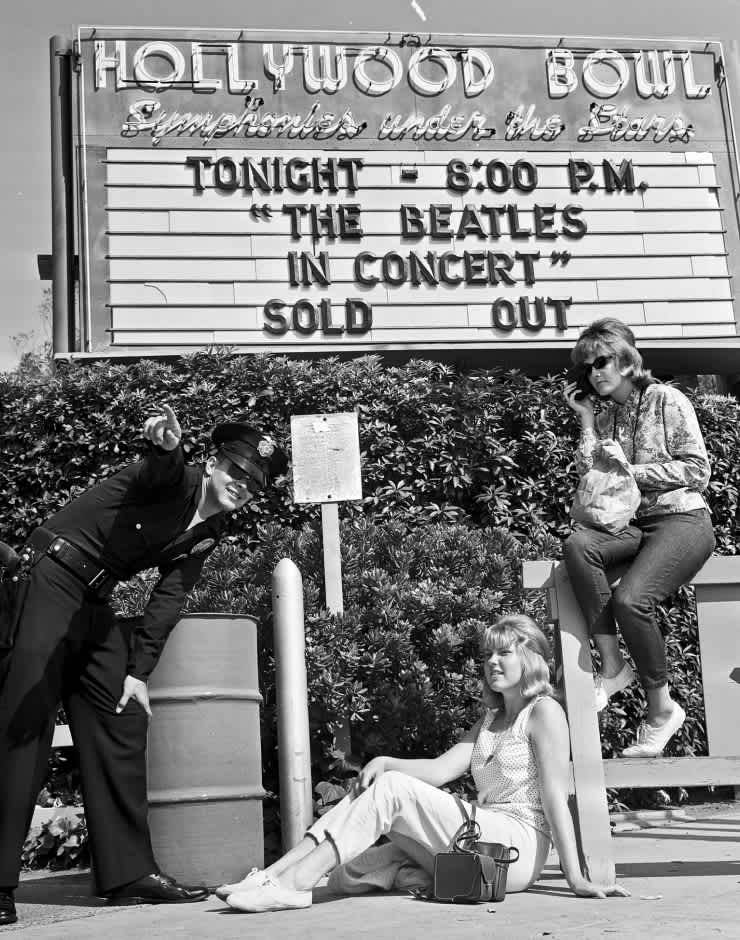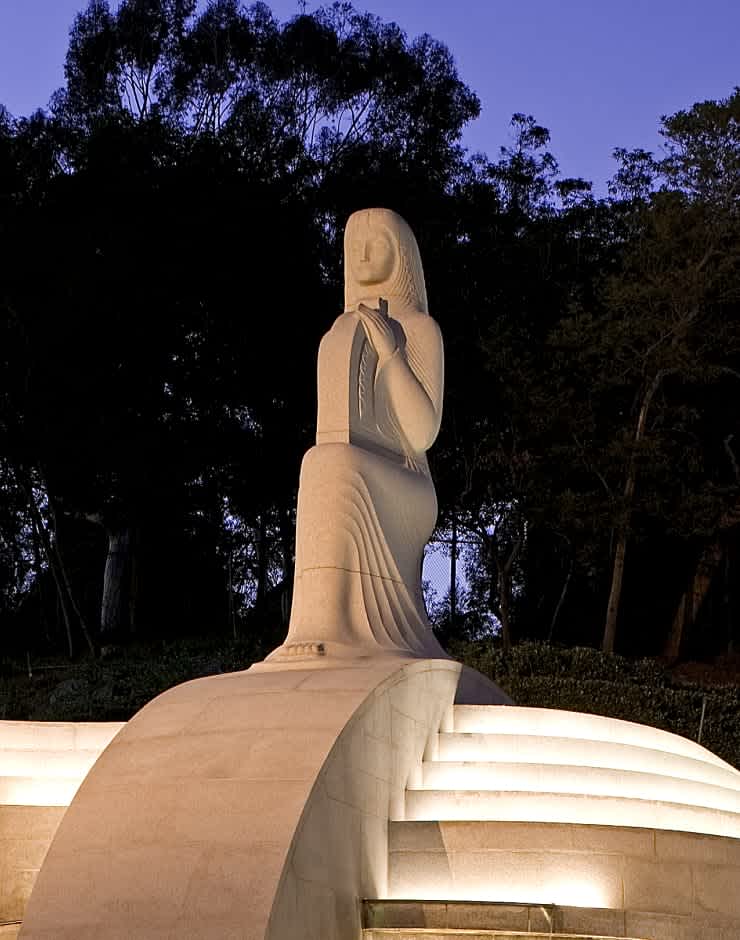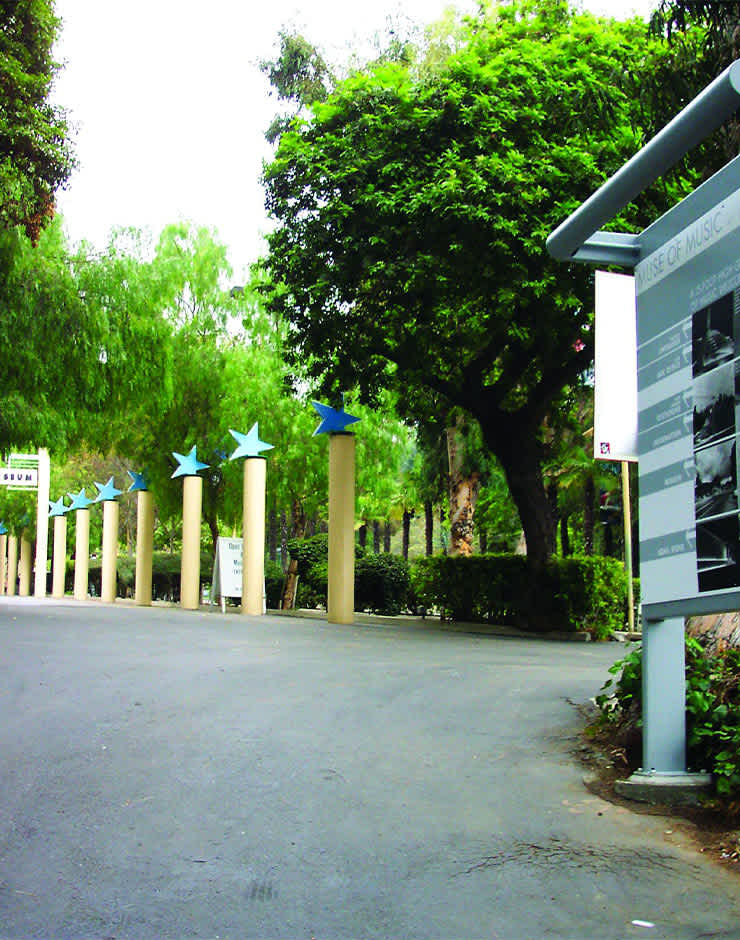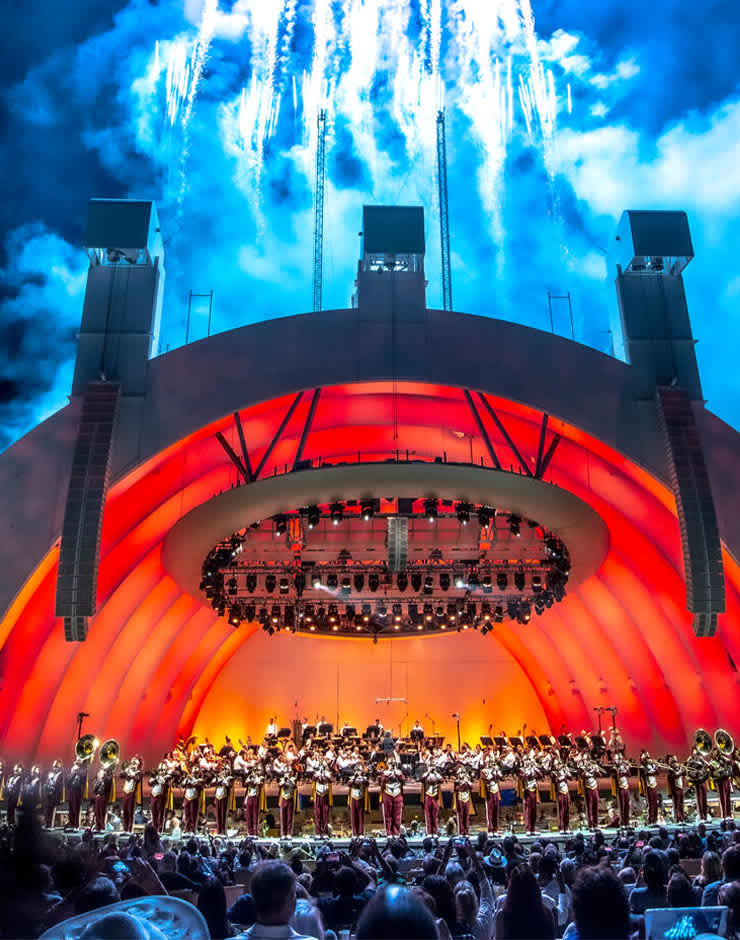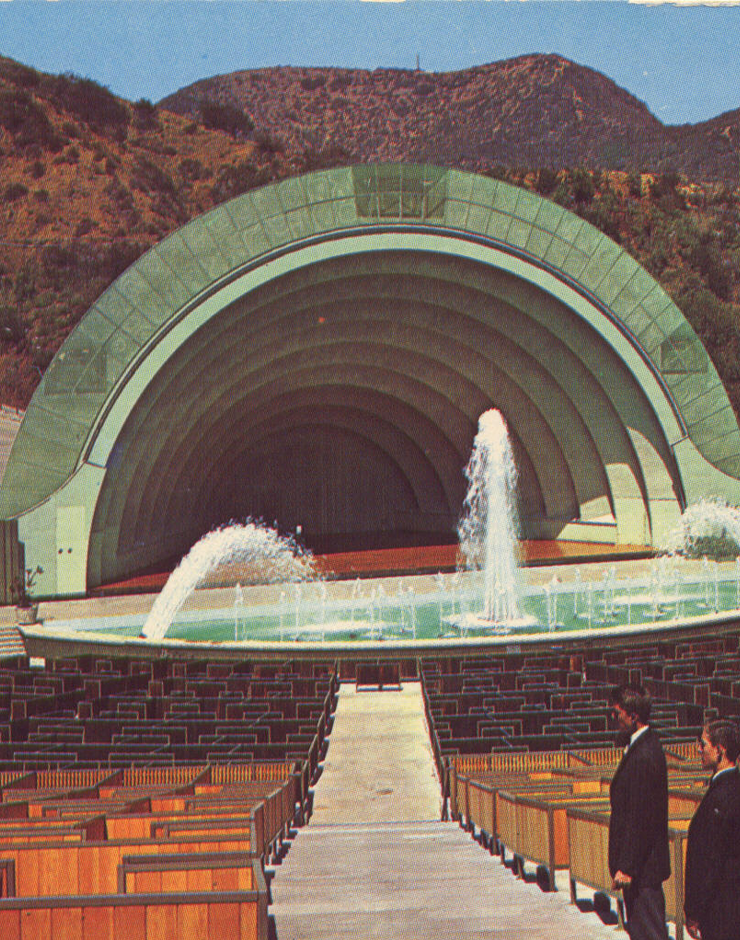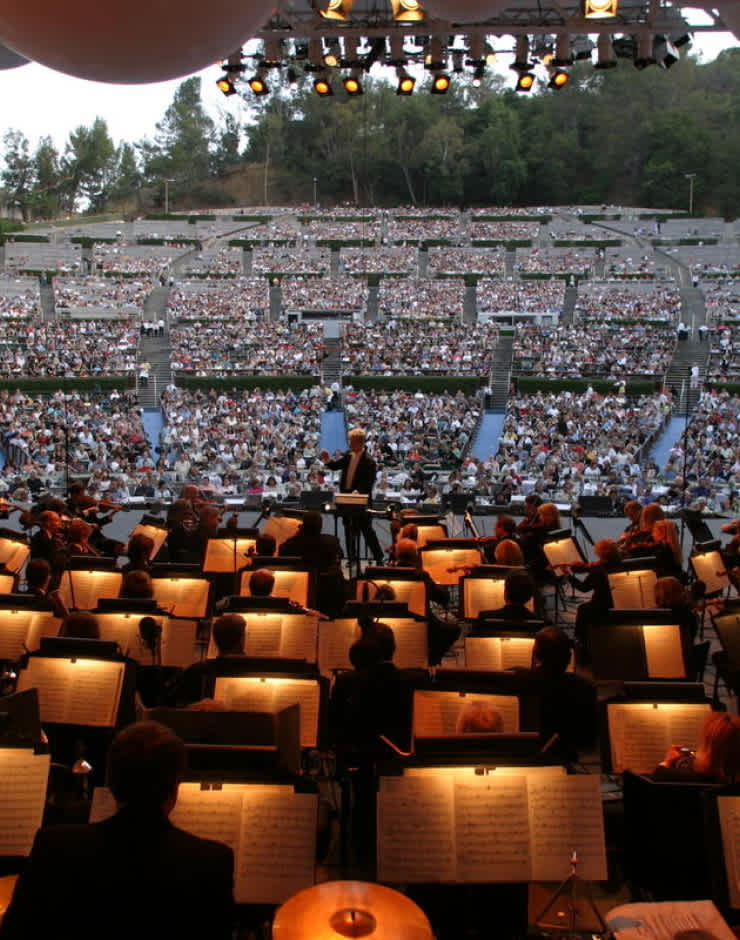The First 000 Years
Presented by
Explore Episodes
![The Marquee]()
Play Episode
Episode 1 | 9:26
MARQUEE
Seeing your name on the Hollywood Bowl marquee is one of the milestones signaling you...
![Muse of music]()
Play Episode
Episode 2 | 7:21
MUSE OF MUSIC
Born of the Great Depression and nearly lost to disrepair, the fountain complex has s...
![Episode cover]()
Play Episode
Episode 3 | 7:28
PEPPER TREE LANE
Pepper Tree Lane—the walkway that transports you to the Bowl—is named for the trees t...
![Tea Room]()
Play Episode
Episode 4 | 5:35
TEA ROOM
For decades, the Hollywood Bowl’s tea room and gardens were a gathering place as mean...
![Hollywood Bowl Shells]()
Play Episode
Episode 5 | 7:37
HOLLYWOOD BOWL SHELLS
From controversial choice to celebrated symbol, the Hollywood Bowl’s historic shells ...
![The Pool Circle]()
Play Episode
Episode 6 | 6:06
POOL CIRCLE
Of all the experiments in the Bowl design over the last century, none has inspired mo...
![SEATING AREA]()
Play Episode
Episode 7 | 8:22
SEATING AREA
Whether you prefer a box or a bench, the Hollywood Bowl experience has been a beloved...
![Backstage]()
Play Episode
Episode 8 | 7:33
BACKSTAGE
Before the current shell was installed in 2004, backstage at the Bowl was more greene...
![The Park]()
Play Episode
Episode 9 | 8:46
THE PARK
The Hollywood Bowl is an 88-acre Los Angeles County Park, filled with picturesque hid...
![]()
Play Episode
Episode 10 | 12:13
NAMED SPACES
Only a handful of truly devoted Bowl fans have been honored with a space named after ...
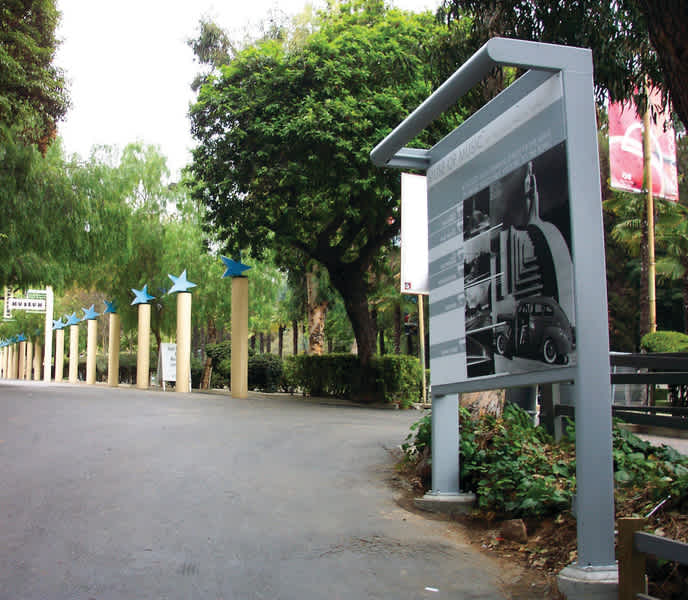
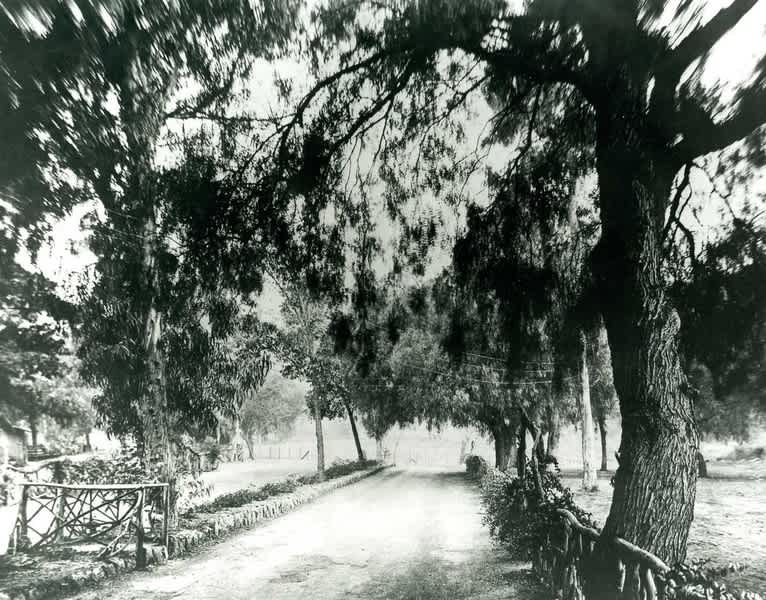
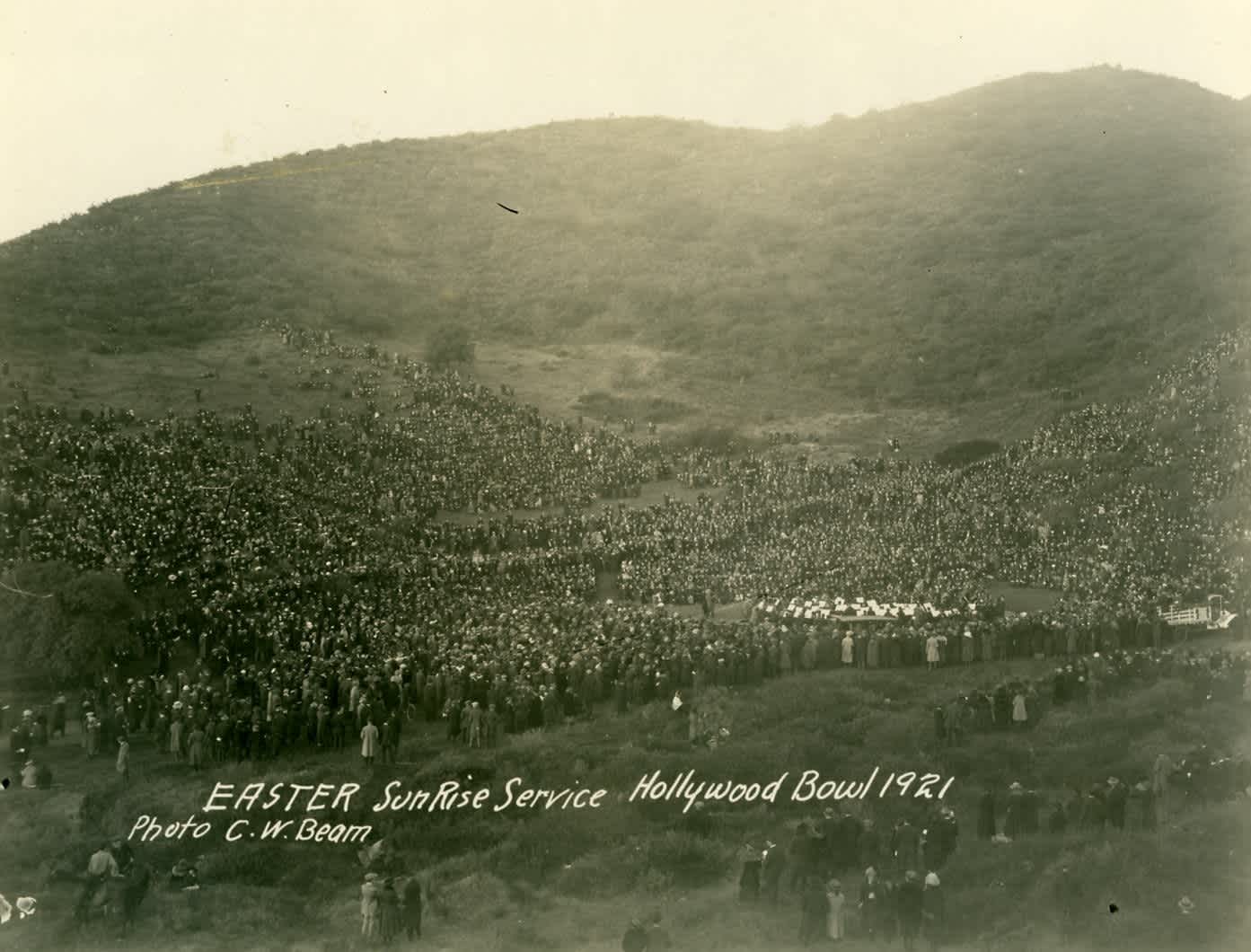
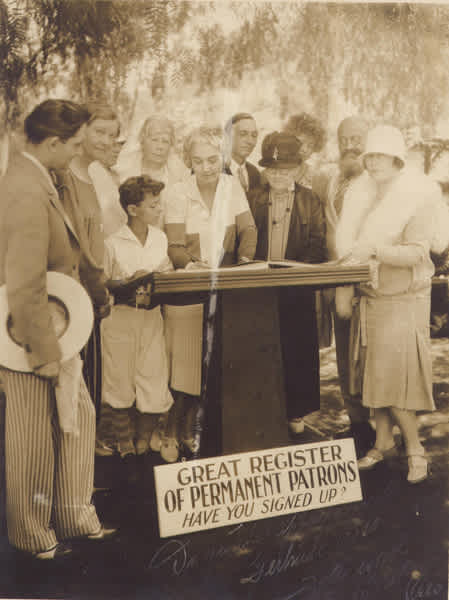

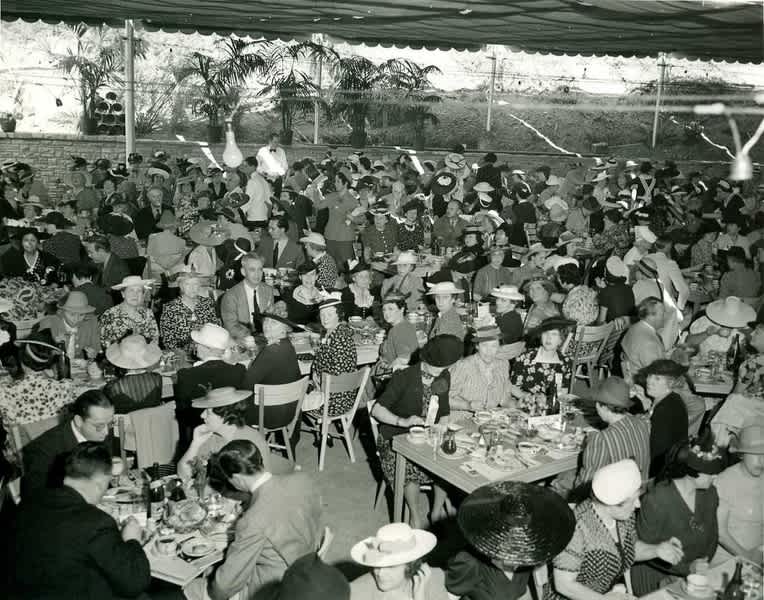

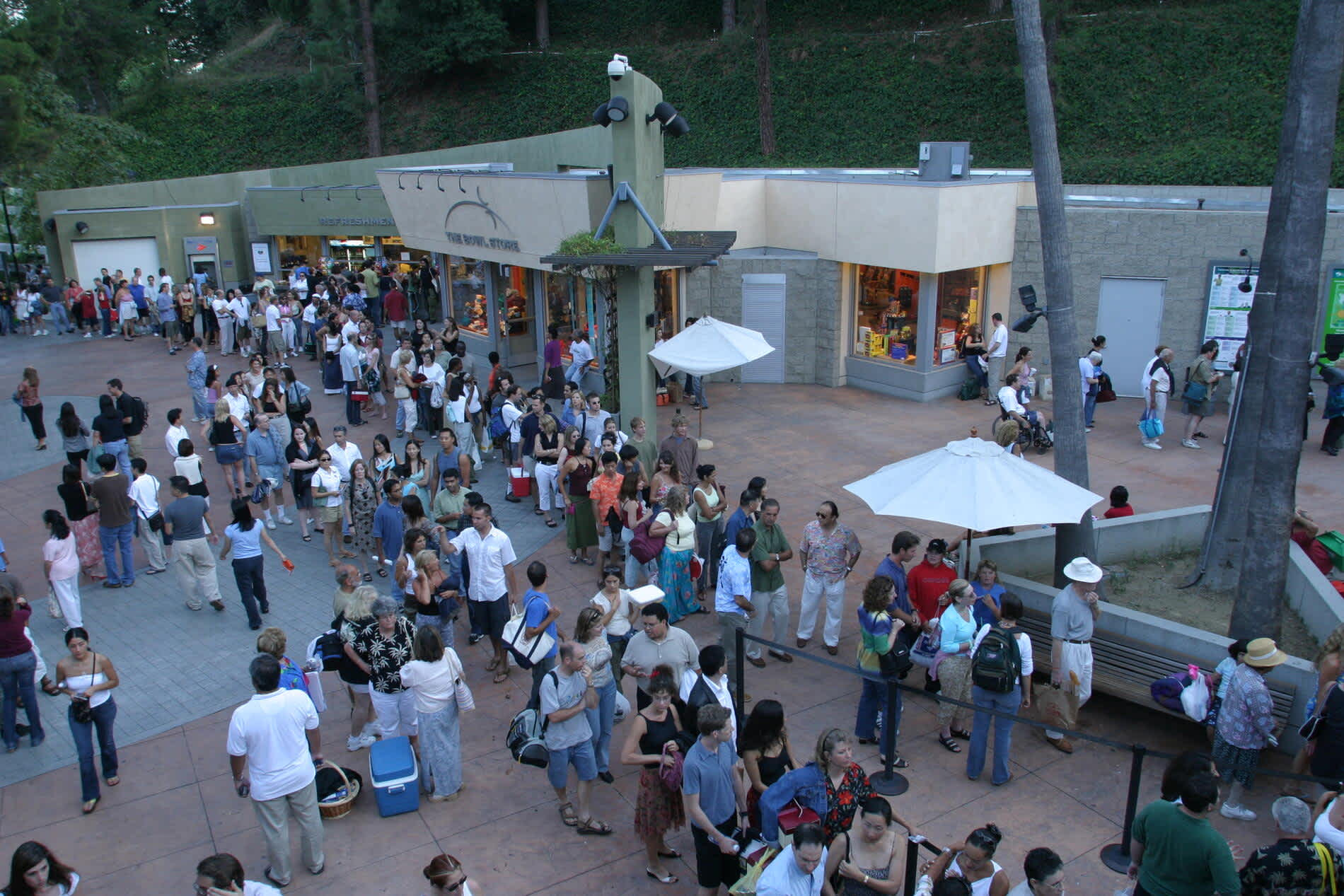
Stars dancing atop pillars led the way up Pepper Tree Lane in the 1990s
Photo Credit
Southern California Media Group Archives
The original Pepper Tree Lane, ca. 1926
Photo Credit
California Historical Society Collection at the University of Southern California
The first Easter Sunrise Service at the Hollywood Bowl drew 10,000 people in 1921.
Photo Credit
Charles W. Beam
Artie Mason Carter (center) helps the Bowl’s oldest permanent patron (“Grandma” E. J. Wakeman) and its youngest (Philippe de Lacey) sign the Great Register of Permanent Patrons
Photo Credit
Los Angeles Philharmonic Archives
“Grandma” E.J. Wakeman, a tireless, hardworking Bowl volunteer, celebrates her 87th birthday at the Bowl in her wheelchair under a canopy; 1924
Photo Credit
Los Angeles Philharmonic Archives
Patrons eat dinner in the Tea Garden before a Hollywood Bowl concert
Photo Credit
Los Angeles Philharmonic Archives
Audience members line up to buy tickets before a concert, ca. 1950s.
Photo Credit
Photo by Otto Rothschild Courtesy of The Music Center
Audience members line up to buy tickets before a concert, ca. 2000s
Photo Credit
Robert Millard
1/8
You’ve walked up it and down it dozens of times, maybe hundreds. But did you know that it had a name? Pepper Tree Lane is the walkway that takes you from Highland Avenue up to the Hollywood Bowl’s Main Plaza where the Box Office and Main Entrance gates are.
Somewhere along Pepper Tree Lane, the outside world ends, and the Hollywood Bowl begins. A pathway from the hustle and bustle of L.A.’s second busiest boulevard to the idyllic, serene canyon originally known as "Daisy Dell."
That transformative experience goes back 100 years—older than the name Pepper Tree Lane, older than the pepper trees that once miraculously sprouted there. Old as the Hollywood Bowl, itself. And in its evolution, you can see how the Bowl of 1922 became the Hollywood Bowl of 2022.
Easter sunrise services were a fairly common occurrence in Southern California in the 1920s. Hundreds or thousands would gather together in some picturesque, outdoor setting to welcome the dawn on Easter morning.
The Bowl’s intrepid founder Artie Mason Carter dreamed of holding one of these services in Daisy Dell. She and her business partners had just acquired the land for the purposes of holding outdoor concerts there. She cajoled William Andrews Clark Jr.—founder of the Los Angeles Philharmonic—to lend his orchestra for the proceeding. They did their best to advertise the concert in the various Southern California newspapers.
Their ads promised: An orchestra and a choir, surrounded by trumpeters strategically positioned on the hilltops so that when the first light of the sun came up over the mountain, the music would fill the canyon with sound.
Their marketing worked. There was also strong word-of-mouth: People had been hearing rumors about this Hollywood Bowl place, and its alleged “magical acoustical properties.” They came to see it, and hear it, for themselves.
The Pacific Electric Company began running trolleys to Hollywood at 3am. Streetcars, filled to capacity, spilled people out right at the base of what is now Pepper Tree Lane. The first concert-goers to walk in large numbers up and down that path, did so that Sunday morning, March 27, 1921.
The precise number of attendees is lost, but between 5,000 and 10,000 trekked up the hill, guided through the darkness by singers from the Hollywood Community Chorus—an organization also run by the tireless Artie Carter. The singers held candles, as they literally ushered the Bowl’s first audience into the canyon. Trampling over knee-high weeds and grass, the audience that day quite literally began blazing the trail that we still walk today.
While Carter was the creative force behind it, there would not be a Hollywood Bowl or a Pepper Tree Lane but for an early 20th century actor named H. Ellis Reed. Reed and his father—who everyone called “Dad” Reed—were the two people who actually found the Bowl site. The two men were hiking (aka trespassing) in 1919 looking for a site for a natural amphitheater, and they took a turn to avoid an angry looking Doberman, and lo and behold, found Daisy Dell. The two became the groundskeepers / superintendents / night watchmen. If the Bowl needed it, the Reeds made it happen. They even lived on the property in a small house that they built themselves.
As the Bowl started to get really popular in the late 1920s, the future Pepper Tree Lane became overly congested. There were more than a few near misses, as cars weaving out of stacked parking spaces had to avoid pedestrians snaking down the hillside.
Ellis Reed planted wooden stakes made from a pepper tree they chopped down, to keep pedestrians on one side and cars on the other. Peppers are big, billowy evergreen trees—like a weeping willow, but without the weep, more of an explosion of leaves and branches and unruly roots, and they can grow like weeds. The stakes Reed planted took root, and a row of pepper trees shot up like rockets. Eventually, the trees contracted a parasite and had to be pulled out, but the name, Pepper Tree Lane, has stuck.
A string of eccentric characters became fixtures on Pepper Tree Lane in the Bowl’s early history. In addition to Ellis and “Dad” Reed, there was Philippe De Lacy, a child actor from the silent film era, who, from the age of 5 until about 10, stood after every concert in a giant golden bowl (kind of a big cauldron looking thing). He would ring a bell and chant “Put your pennies in the bowl! Put your pennies in the bowl!” De Lacy and the Golden Bowl purportedly raised $20,000 for the Bowl over the years.
There was also “Grandma” Wakeman who committed on her 80th birthday to selling 100 Bowl subscriptions per year every year for the rest of her life. She lived to be 98 and kept her promise. There was also “Major” George Brookwell, an army veteran and amateur photographer who set up a stand to sell postcards with his photographs of the Bowl for a nickel. Major Brookwell would sit in a lawn chair and nap with his hat pulled down over his eyes, and if you wanted to buy a postcard, you’d have to wake him up.
In addition to the characters along Pepper Tree Lane, there were homey gathering spaces: the Tea Garden, where you could buy a hot dog for a quarter; there was a literal log cabin that served as the box office; and, before it was the “Main Plaza,” they used to call the dusty roundabout at the Bowl’s entrance the “Meet Me” Plaza, where friends could gather before going in and finding seats together.
As the Bowl professionalized throughout the 20th century, the rustic charm and characters of Pepper Tree Lane faded away, but, even if you can’t see Phillipe De Lacy in the Golden Bowl or Grandma Wakeman shilling 100 subscriptions a year from her wheelchair, these people are continuing presences. Their memory gives Pepper Tree Lane that magical, liminal power. Pepper trees or no, it’ll always be Pepper Tree Lane.
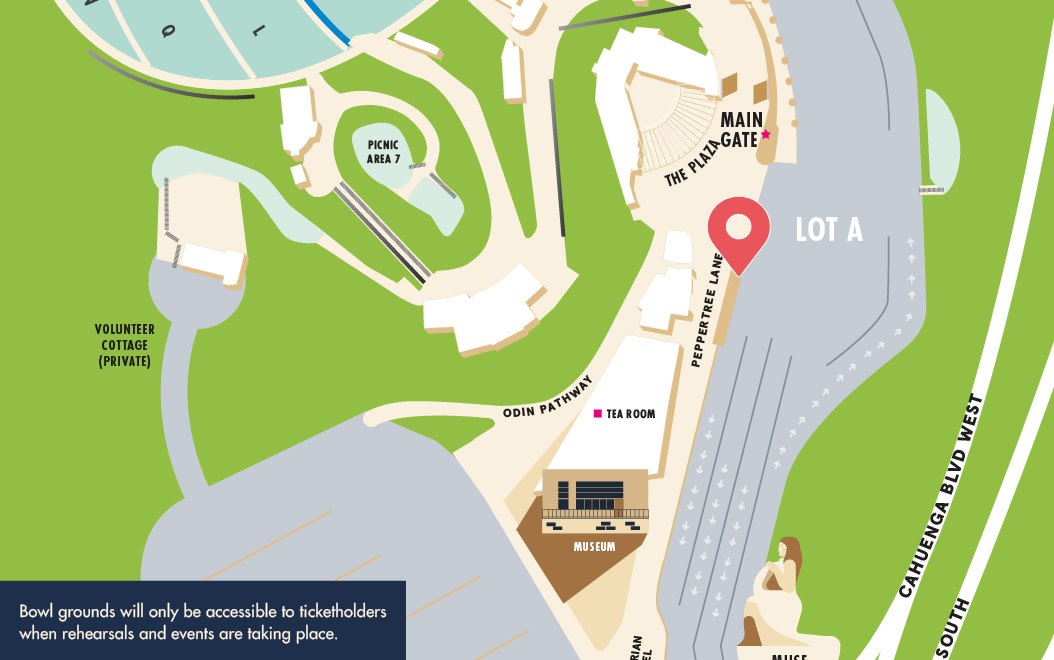
0:00
0:00
